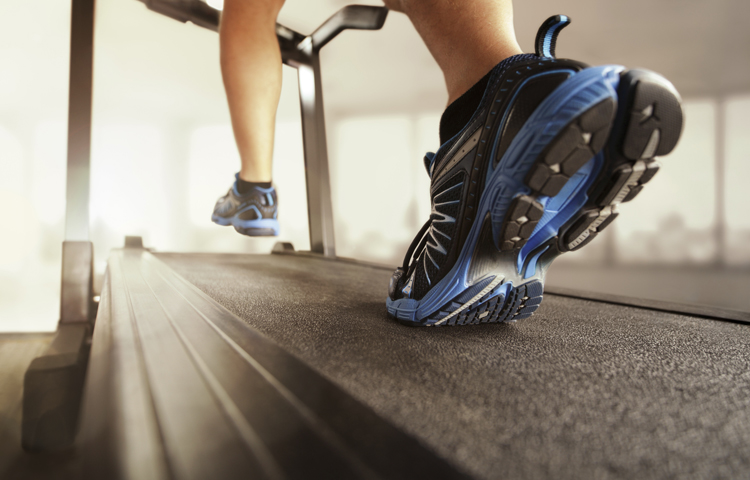
For many runners – especially those just getting started – training on the treadmill is a convenient weather-proof option. But is it the best option?
When we run outside, the ground beneath us does not move; it provides a solid surface that opposes the forces placed upon it by the sole of your foot. Running outside, we use our hamstrings, glutes and lower back muscles to push off against the ground.
When we run on a treadmill, however, the ground underneath us moves freely away from the foot. The problem here is that when the foot has nothing to push against, it just flows away from the body effortlessly. The hamstrings, glutes and lower back are no longer required to produce large amounts of effort, so they activate far less.
“Why is that a problem?” I hear you ask.
Well, your glutes are one of the major stabilisers of your spine. If they are not firing, then you are creating a situation where your quads and hip flexors are doing all the work.
If you spend an extended period indoors – an entire winter for example – then start moving outside, you have created a big risk factor for injury by over-recruiting your front muscle groups and under-recruiting your rear muscles.
I see a lot of hamstring tendon problems in March and April due to hamstrings suddenly being asked to switch from doing 10K indoors to 10K outdoors. Your cardiovascular system will cope, but your muscular system will not.
3 ways to avoid muscular imbalances
- Train smart: do shorter sessions outdoors to avoid the worst of the bad weather
- Cross-train: use bad weather as an excuse to go and work on your deficiencies (weak core, poor flexibility, etc)
- Mix’n’match: try to limit your treadmill sessions to 50% of your total running time






